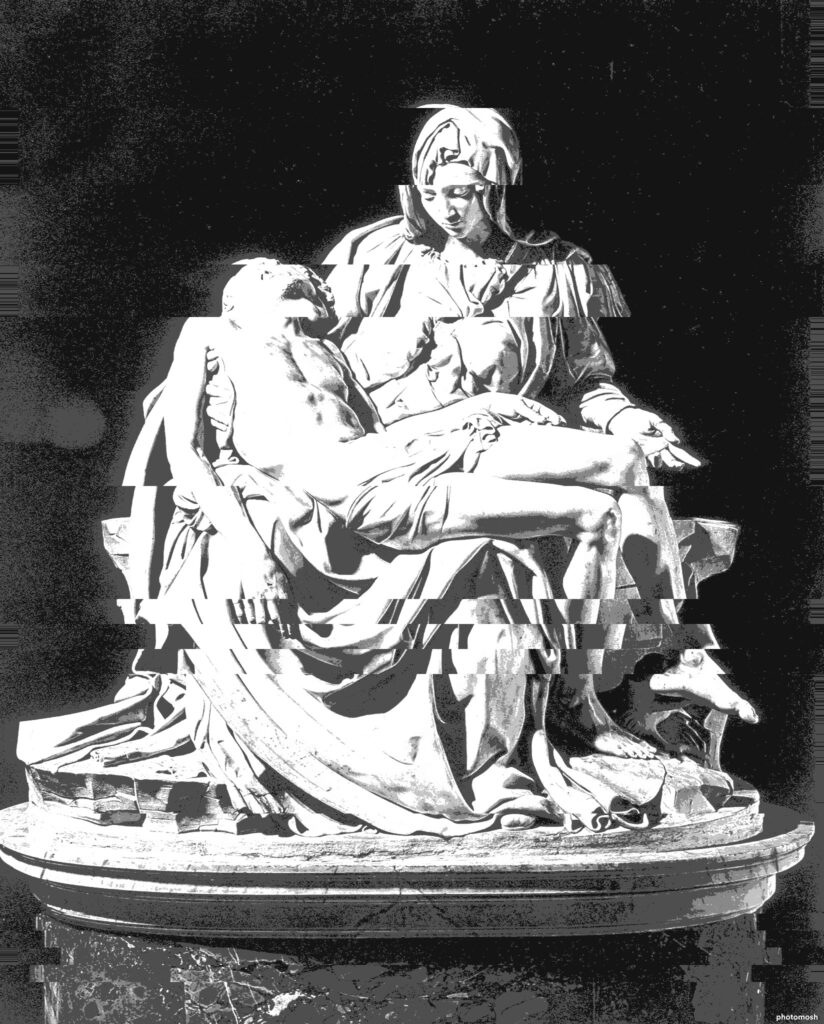8 So they departed quickly from the tomb with fear and great joy, and ran to tell his disciples.
Following a great earthquake after the Angel moved the rock covering the tomb of Jesus, Mary Magdalene and the other Mary are informed that Jesus will appear to the apostles in Galilee. The angel appoints the women as the apostles to the apostles, they sent out to the ones who are going to be sent out.
They depart immediately in “fear” and great joy to inform the disciples. Some translations have this phrased as “awe” instead of “fear” and that’s because in our own time its hard to translate a word that essentially means neither. Fear in the modern context expresses a purely negative connotation and awe doesn’t encapsulate the submission to divine power, its an ancient concept that is kind of both fear and awe and kind of neither since modern English doesn’t really grasp the gravity of the framing.
9 And behold, Jesus met them and said, “Hail!” And they came up and took hold of his feet and worshiped him.
Jesus now appears to the women physically, it is important to stress that this is not a spiritual manifestation or illusion. Jesus greets them and Matthew tells us that the women “took hold of his feet and worshiped him.” This tells us two very important things. Jesus has physically resurrected and the women perceive him to be God.
10 Then Jesus said to them, “Do not be afraid; go and tell my brethren to go to Galilee, and there they will see me.”
Jesus now reaffirms the mission given to the women by the angel, and comforts them by telling them not to be afraid and they are to go to his “brethren” and tell them to go to Galilee where they will see him. Although not all of them will, Thomas will not be present. Jesus identification of his disciples as “brethren” points to the consummation of the New Covenant making them truly a part of his body. They are now family. His students are now his brothers, Jesus will briefly mention such things before his crucifixion but here it is concretised.
11 While they were going, behold, some of the guard went into the city and told the chief priests all that had taken place.
As the women go off to find the apostles, what is left of the Roman guard who were stationed at the tomb go off to Jerusalem to find the leaders of the Old Covenant people, the Chief Priests. Pilate himself placed these men to watch over the tomb because they had fears that Jesus’ disciples would steal the body away, the guards do not go to Pilate to inform him of their failure because this failing in a watch was punishable with execution, instead they go to the Chief Priests.
The supernatural occurrences that they have witnessed may also have played a part in their desire to go to the Chief Priests as what they have seen is not something that the Gentile administration would have believed. The guards tell the Chief Priests “all that had taken place”, this was presumably include the earthquake, removing of the rock by an angel and the appearance of Jesus.
12 And when they had assembled with the elders and taken counsel, they gave a sum of money to the soldiers
13 and said, “Tell people, ‘His disciples came by night and stole him away while we were asleep.’
14 And if this comes to the governor’s ears, we will satisfy him and keep you out of trouble.”
15 So they took the money and did as they were directed; and this story has been spread among the Jews to this day.
Matthew tells us that the Roman Guards who have gone to the Jewish leadership literally paid the Romans money to lie about what they had seen. The issue being that as we have previously mentioned, a failure in a night watch as a Roman Guard is punishable by execution, the Jewish leadership claim they will make defend their case if Pontius Pilate hears about what would happen. This is very beneficial for the guards, the Gentile administration of the region would have zero time for supernatural, especially as they pertain to the Jews’, “excuses” for failing in their duty. The Jewish leadership are also willing to line their pockets and defend them if the case comes up.
Matthew then continues by explaining to his readers that “this story has been spread among the Jews to this day.” This is a fascinating admission. First of all, good scholarship places Matthew’s authoring of his Gospel to the mid 50s. So it has been about 20 or so years since the event. At this point in Jewish history, the argument is not “Jesus didn’t exist” or “Jesus didn’t claim the things people say” both sides of the argument, Jews and Christians maintain he existed, said what he said and most importantly…his tomb was empty three days after his crucifixion. The difference of opinion is why it was empty, Christians saying he rose from the dead and the Jews spread the rumour that his body was moved by the disciples.


Leave a Reply